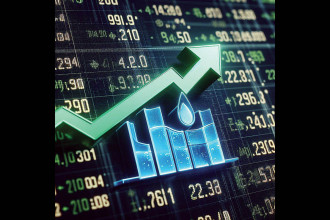
The oil markets tend to reflect the world order. The current fiasco surrounding the USA and Iran situation is a testament of how the energy products follow these events. Due to major production and subsequent export of oil from the Middle East to the rest of the world, any significant incidents in this part of the world will invariably affect the market dynamics and will influence the value of oil globally. Hence, for a commodity trader especially trading in the oil markets, it is imperative to follow the developments emerging to stay ahead in the race.
The escalation began with the mid-September attack on a Saudi Arabian oil facility that reduced about 6% of the global oil supply causing an abrupt US$ 8 per barrel hike in the price of crude oil before disintegrating quickly to the earlier price levels.
The US forces killing of an Iranian General in Iraq in early January 2020 and Iranian retaliation with a missile strike on a US military base in Iraq also inflicted similar results in the global oil markets. Although the discussions surrounding the prospect of another World War seem to be fading soon, another attack either way could ignite a response in that direction.
US Domination in Global Oil Production
Statistically, the US is now dominating global oil production. Whereas OPEC’s power and supposed monopoly in the oil markets have declined in the recent past. Currently, the US, Russia and Saudi Arabia (collectively known as the Big Three) call the shots.
Once the largest oil suppliers, Saudi Arabia is in long-term adjustment phase as it transitions oil-production decisions from the King of Aramco, the state oil giant that became a public company in December. Major updates are not anticipated quickly, however, over the long term, Aramco may re-engineer to become more focused on cash flow and revenue models for dividend payments rather than serve as a cushion for the global oil markets. The oil from Saudi Arabia has a low marginal cost for any production added. If the focus changes to corporate valuation, the corporation may restrict oil flow and increase cash flow. On the other hand, the economy of Russia requires cash flow from its oil and gas revenues. The Russian economy can participate in the production cuts but only to a certain degree.
The evolving partner in the Big Three is the USA. Though the growth rate of the production from Shale producers is reducing, higher prices can provoke an increased supply response in around eight months. The other striking and perhaps understated aspect is the capacity of the US to further enhance production should the prices rise to a level that would incentivise renewed investments in regions like Eagle Ford, Bakken and Niobrara. These places observed robust production growth in comparison to 2014 when oil was trading in US$ 80-115 range. Since the oil crash in the early-2016, the supply growth has concentrated its facilities around the Permian Basin, which is superior connected with pipelines than the other regions to the pricing center in the Cushing area and thereafter to export stations in the area of Houston.
Another factor in the headlines is inventories. The storage levels were highly improved in the US and around the world at the time of disruptions. Any disruptive incidents in the upcoming days might not witness such a quick relaxation of price rise if the inventory levels are relatively diminished as compared to the late 2019 and early 2020.
Threats Emerging From the Middle East
Analysts opine that while the oil rise from the geopolitical conundrum in the recent past may have been short-lived, it has only increased the possibility of disruptions in the ensuing days. The US has announced that it can target foreign military leaders who it may consider potential threat. Likewise, Iran has declared that it can attack the US military in Iraq in retaliation. In hindsight, the Saudi oil facilities attack in September 2019 taught the world that even Saudi Arabia could be targeted. Every strike and subsequent counter-strike will provide lessons for both the camps to raise the stakes for the next round of escalation.
Conclusion
Market pundits opine that compared to 2018 and 2019, the possibility of significant events in 2020 has inclined given the current scenarios. Although the risk premium looks relatively low, it will take a sequence of low probability, high impact and disruptive events to change the market risk dynamism assuming the tendency of Shale producers to quickly emerge as sellers in the markets as they enter hedging strategies for future productions.





